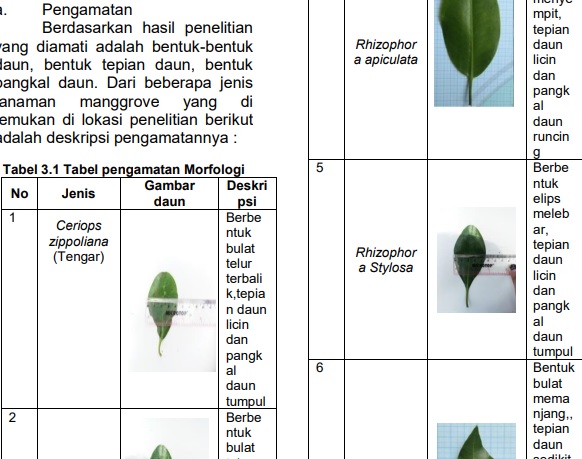STRUKTUR MORFOMETIK BERBAGAI JENIS DAUN TANAMAN MANGGROVE DI DESA HULALIU
Abstract
Background: Mangrove forests are a unique type of forest and grow along beaches or river mouths that are affected by t ides and are often called mangrove forests. Method s : This research was conducted using a descriptive research type. The population observed in this study were various types of mangrove plants with a site length of 100 m and a site width of 50 m. Results : Ca lculation of maggrove morphometric averages on leaf thickness, leaf area and stalk length obtained the highest measurement results for Bruguiera gymnorrhiza 3.21 mm (leaf thickness), 40.04 mm (leaf area), 4.19 mm ( stalk length). While the lowest measureme nt results for leaf thickness were the plant species Rhizophora apiculata with a result of 1.44 mm, for leaf area the lowest measurement results were obtained for the type Sonneratia alba, and the results for measuring the length of the petiole were the pl ant type Sonneratia caseolaris with a result of 0.95. From the results of observations made on the plants Ceriops zippoliana, sonnerati caseolaris, bruguiera gymnorrhiza, rhizophora apiculata, rhizophora stylosa, avicennia marina, sonneratia alba Conclusio n : Each plant has a different leaf shape, leaf margin and leaf base shape because the morphology of these plants is differentDownloads

Authors who publish with this Journal agree to the following terms:
- Author retain copyright and grant the journal right of first publication with the work simultaneously licensed under a creative commons attribution license that allow others to share the work within an acknowledgement of the work’s authorship and initial publication of this journal.
- Authors are able to enter into separate, additional contractual arrangement for the non-exclusive distribution of the journal’s published version of the work (e.g. acknowledgement of its initial publication in this journal).
- Authors are permitted and encouraged to post their work online (e.g. in institutional repositories or on their websites) prior to and during the submission process, as it can lead to productive exchanges, as well as earlier and greater citation of published works




 2
2






